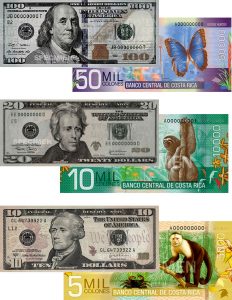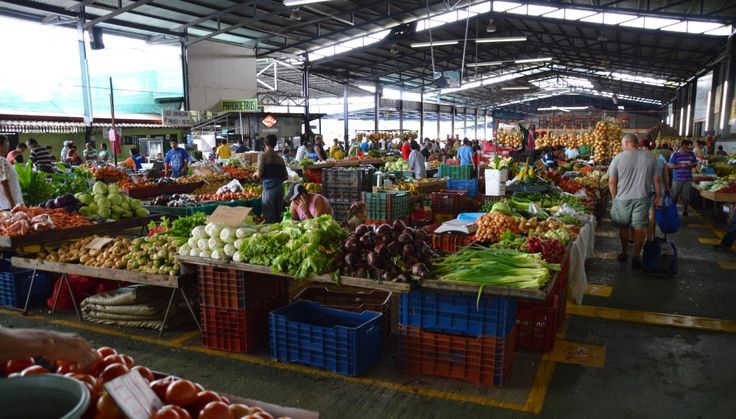Many expats live in Costa Rica, but earn, or collect, the money they live on in a foreign currency, the U.S. dollar. For instance, you could be running an online business by which customers pay you in dollars, or collecting a pension in dollars, or renting out a vacation home on VRBO and getting paid in dollars. You could easily be in the situation where you’re paying for your Costa Rica expat life in dollars.
So, the historical and expected future relationship between the U.S. greenback and the more colorful colón can be a very important consideration. How has that relationship fared over the years?
Well, I remember way back when I first arrived in Costa Rica, in the early days of this 21st century, a dollar would fetch you around 350 colónes. Now I don’t remember what the exact rate was, but that’s close. I know it was below 400. Nowadays a dollar will buy you more than 500 colónes. Wow, that’s quite a “depreciation” of the colón, you might be enthusiastically thinking. Well, before getting too excited, let’s talk a little about Costa Rica exchange rate history.
The colón has had an unusual relationship with the U.S. dollar. Back in 2001 that relationship could best be described as a “crawling peg”; rather than being defined by a constant value to the dollar, the colón instead would grow progressively weaker at a fixed rate of about 3.294 colones per dollar per month. On October 16, 2006, however, that relationship was modified due to weakness in the U.S. dollar and the perception that the colón was thus undervalued.
Since 2006, the exchange rate has been allowed to float freely within a currency band referenced to the United States dollar. The floor of the band has been set at a fixed value, while the ceiling changes at a fixed rate. In practice the exchange rate has remained fixed at the lower value of the currency band. And for the past 10 years, the rate has fluctuated between 500 and 550, with one limited exception related to the 2008 world economic crisis, when the colón reached a “zenith” of around 580.
That means you’re likely not to suffer the wild currency rate gyrations that are routinely experienced in many other countries. And that’s a risk factor in the expat’s favor. Even though such gyrations may benefit the dollar, they could just as easily go in the opposite direction. And that instability gives rise to risk.
The Costa Rica economy has become more and more “dollarized” over the years. Gone are the days when a store clerk would give you a disgusting, or confused, look if you handed him or her a “jackson” (or, soon to be, “tubman”). Also gone are the days when you’d be routinely ripped off if you tried to do so. Most cash registers in Costa Rica can now easily do the math to give you your correct change in local currency.
Paying for your Costa Rica expat life in dollars has become a convenient and relatively stable reality in Costa Rica. You can have your bank account in dollars. You can get dollars out of most ATM’s. You can practically transact all of your day-to-day business in dollars, if you’d prefer…and many do.
The bottom line is that the U.S. dollar carries a lot of weight in Costa Rica. And for us expats that can be a very good thing.












